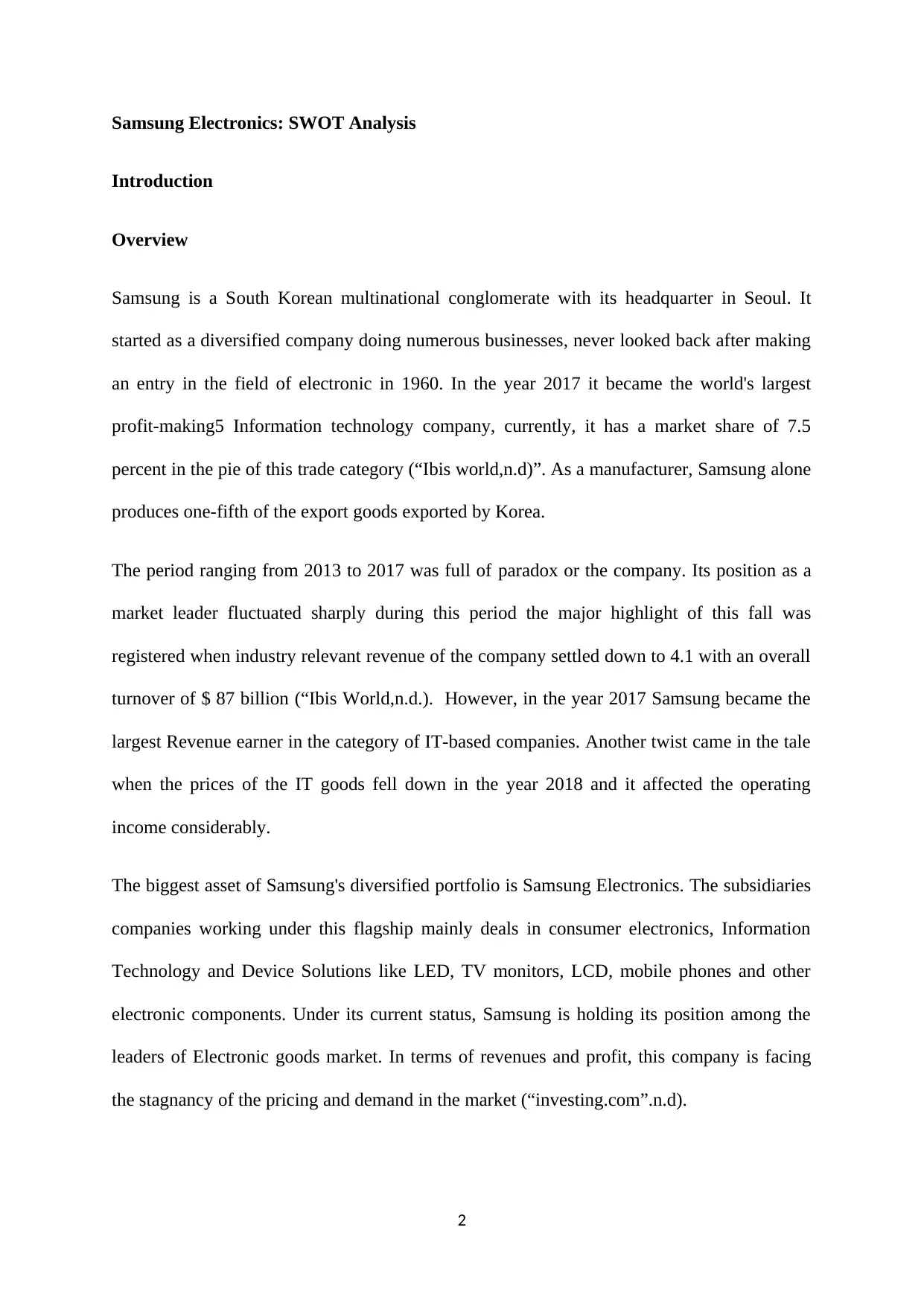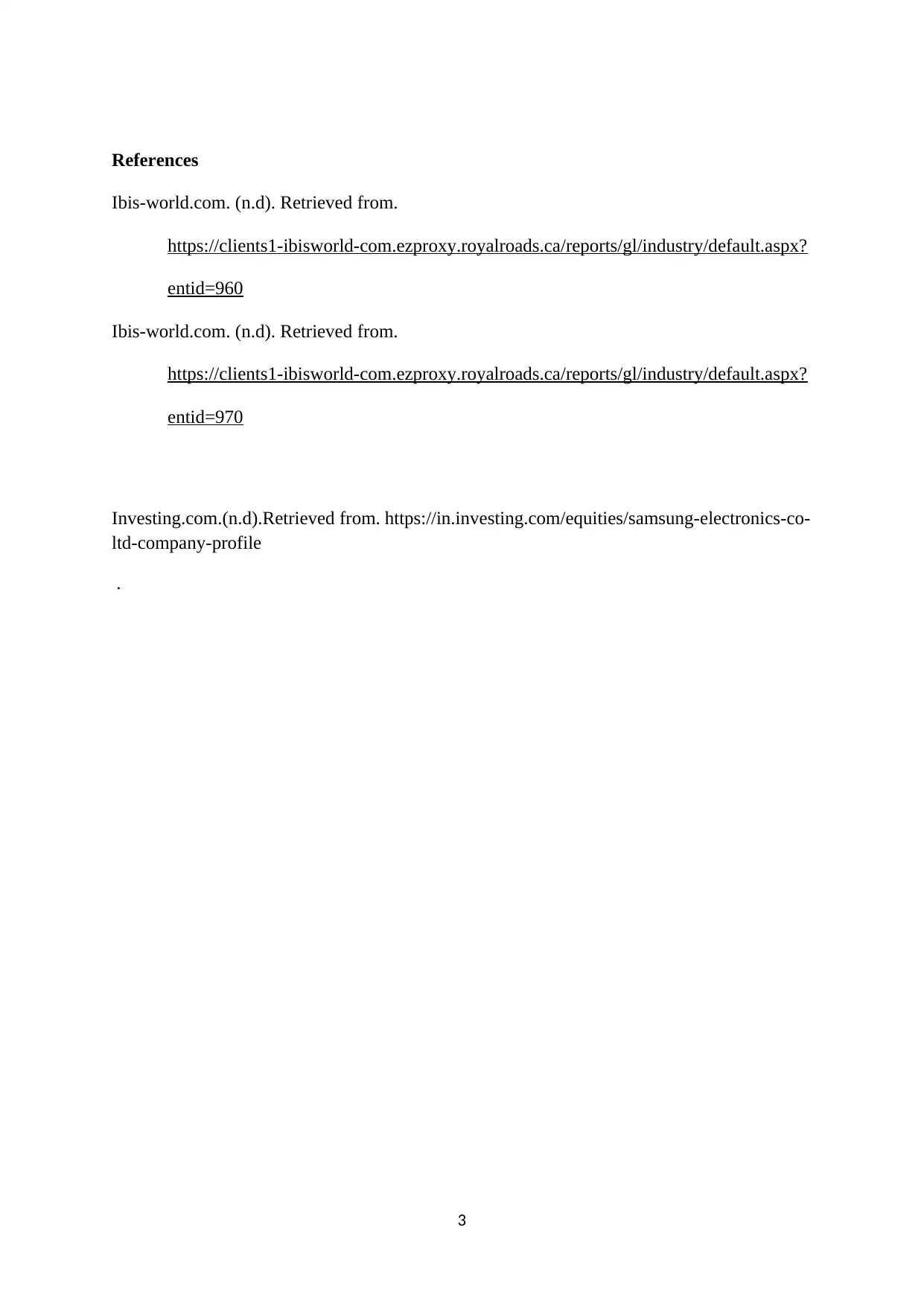Analyzing Samsung Electronics: SWOT, Market Share, and Strategy
VerifiedAdded on 2023/04/24
|3
|344
|69
Case Study
AI Summary
This case study provides a SWOT analysis of Samsung Electronics, a South Korean multinational conglomerate and a major player in the global IT and electronics market. The analysis covers Samsung's fluctuating market leadership, particularly its performance between 2013 and 2017, including revenue dips and subsequent recovery. It highlights the significance of Samsung Electronics within the larger Samsung Group, focusing on its diverse portfolio encompassing consumer electronics, IT, and device solutions like LED, LCD, and mobile devices. The study also touches upon the challenges posed by market pricing and demand stagnation, referencing data from Ibis World and Investing.com to contextualize Samsung's current position and future prospects in the electronics industry. Desklib provides access to similar case studies and solved assignments to help students.
1 out of 3










![[object Object]](/_next/static/media/star-bottom.7253800d.svg)